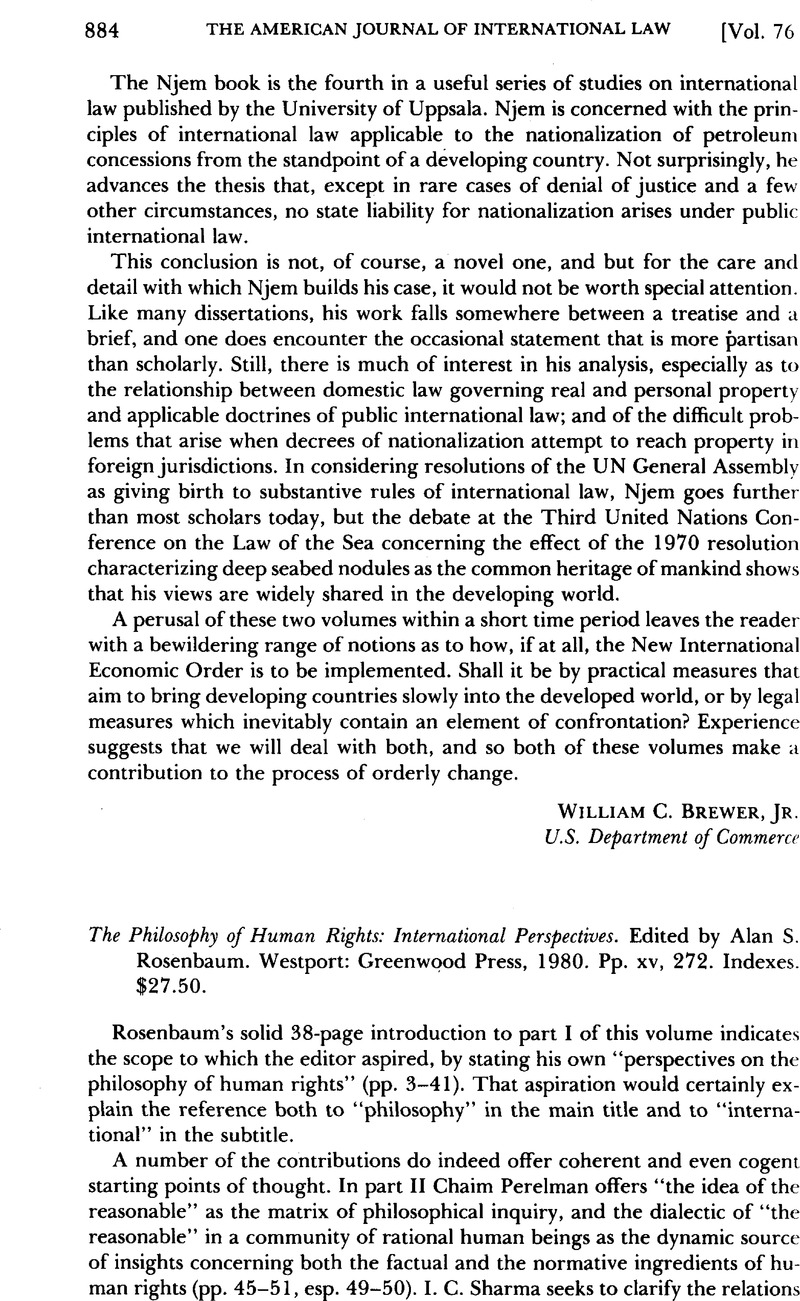No CrossRef data available.
Published online by Cambridge University Press: 27 February 2017

1 It originated as a lecture at Lewis and Clark University rather alio intuitu. One wonders why Professor Milton Konvitz’s more juristic talents were not called on. See his Judaism and Human Rights (M. Konvitz ed. 1972).
2 Concerning Powell’s article, Human Rights, in 3 J. Med. Ethics 160-62 (1973).
3 See Stone, , Justice in the Slough of Equality , 29 Hastings L. J. 995-1024 (1978)Google Scholar.
4 R. S. Downie, at 133, does mention and summarily dismiss Maurice Cranston’s theorem (in his Human Rights, Real and Supposed, in Political Theory and the Rights of Man (D. D. Raphael ed. 1967)) that a human right, to be such, must be practicable, of paramount importance, and universal in character. Elsewhere Andrew Levine, in a generally cogent, elegant, sometimes brilliant discussion (see, e.g., pp. 143-47, on the tensions between human rights doctrine and the dominant [freedom] assumptions of “liberal” society) also seems to ask whether “right” in the human rights sense is a concept that has “viability” (p. 138). Alas, it soon appears that by “viability” he means only intellectual tenability, and not any empirically testable capacity to realize itself in the world.
5 And see C. Frankel, Human Rights and Foreign Policy (1978); T. Buergenthal, Human Rights, International Law and the Helsinki Agreement (1978); and Human Rights and World Order (A. A. Said ed. 1978).
6 The book contains a reading list (pp. 253-56). More directly in the international law concern, see M. Ganji, International Protection of Human Rights (1962); V. Van Dyke, Human Rights, the United States and World Community (1970); E. B. Haas, Human Rights and International Action (1970); international Protection of Human Rights (L. Sohn & T. Buergenthal eds. 1973); and Meron, , Report on the N.Y.U. Conference on Teaching International Protection of Human Rights , 13 N.Y.U. J. Int’l L. & Pol. 881-957 (1981)Google Scholar.